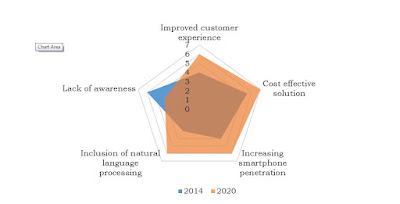According to the report published by Allied Market Research, the Vietnam ERP for Retailers Market garnered 7.2 million in 2017 and is expected to $26.0 million in 2025, growing at a CAGR of 17.4% from 2018 to 2025. The report provides an extensive analysis of top impacting factors, market size & estimations, drivers & opportunities, key segments, and competitive intelligence.
Increase in need for operational efficiency & transparency in business processes and rise in demand for role-based security have spurred the growth of Vietnam ERP for Retailers Market. On the other hand, high investment cost, maintenance crunches, and inadequate flexibility have happened to restrain the growth to some extent. Nevertheless, rush in the adoption of ERP among small as well as medium retailers, and the arrival of cloud-based ERP have created lucrative opportunities in the segment throughout the forecast period.
Request Sample PDF of Vietnam ERP for Retailers Market Report at https://www.alliedmarketresearch.com/request-sample/5225
Based on the component, the software segment accounted for nearly three-fourths of the total market in 2017 and is expected to dominate all through 2018-2025. This is due to the rising demand for ERP software among retailers to enhance consumer satisfaction and operational efficiency of their businesses.
By application, the inventory management segment contributed to nearly one-fourth of the total market in 2017and is anticipated to maintain its dominance during the period. The fact that this ERP is highly used among retailers to effectively manage the inventory levels for ensuring the constant flow of units into and out of an existing inventory has fueled the growth.
Based on the deployment model, the large retailer's segment held the lion share, accounting for nearly two-thirds of the total market. Increase in adoption of ERP among the retail industry in Vietnam in order to enhance business efficiencies and transparencies has driven the market.
Leading market players active in the global Vietnam ERP for Retailers Market include Exact, Deskera, IBM Corporation, Infor, The Sage Group plc, SAP SE, Plex Systems, Inc., Microsoft Corporation, Oracle Corporation, and Epicor Software Corporation. They have adopted various strategies including partnerships, collaborations, mergers & acquisitions, and others to gain a strong position and sustain in the industry.
For purchase inquiry at: https://www.alliedmarketresearch.com/purchase-enquiry/5225
Vietnam Erp For Retailers Market Key Segments:
By Component
- Software
- Service
By Application
- Customer Management
- Demand Forecasting
- Inventory Management
- Store and Warehouse Operations Management
- Purchase and Vendor Management
- Employee Management
By Deployment Model
- On-premise
- Cloud
By Retailer Size
- Large Retailers
- Small & Medium Retailers
Questions answered in the Vietnam ERP for Retailers Market research report:
- What is the growth rate of the Vietnam ERP for RetailersMarket during the forecast period?
- What will be the global vietnam ERP for retailers market size from 2018 to 2025?
- What are the leading manufacturing companies in the Vietnam ERP for Retailers Market?
Similar Reports:
















